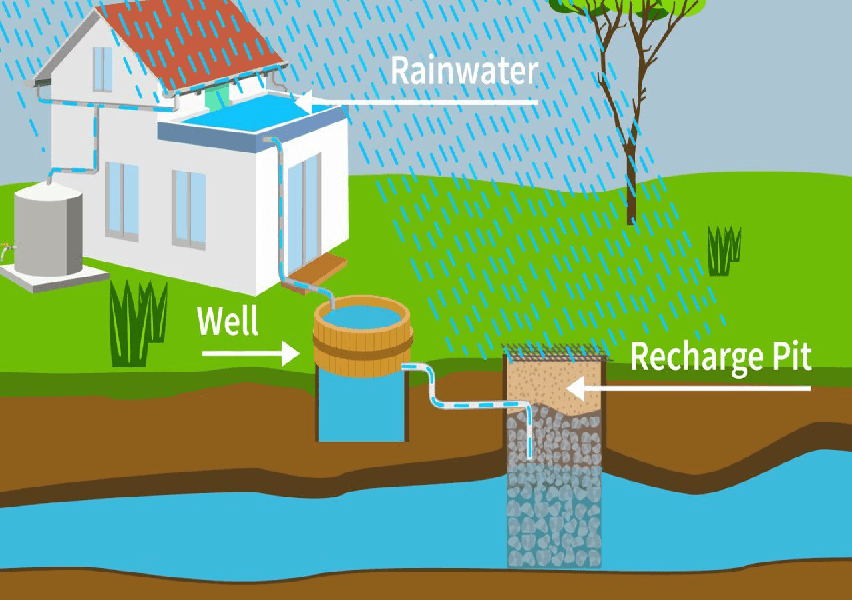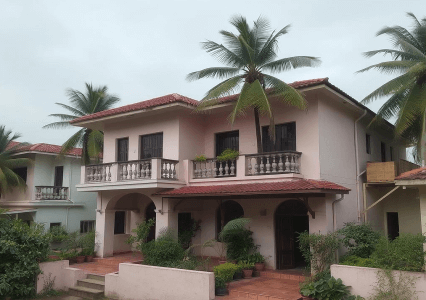
India is rapidly moving towards urbanization and semi-rural and rural areas are transforming into urban centres due to industrial and infrastructure development.
This has created a demand for water in urban and semi-urban areas in India. Rapid population growth, unplanned urban development, and changing climate patterns are putting immense pressure on water resources in Indian cities. Addressing this challenge requires a holistic approach to urban water management that incorporates technology, policy, and sustainable practices.
Here are key solutions for ensuring water sustainability in Indian cities.
- RAINWATER HARVESTING: CAPTURING EVERY DROP: Rainwater harvesting is a vital solution for cities with unpredictable or insufficient water supply. By capturing and storing rainwater for future use, cities can significantly reduce their dependence on traditional sources like rivers or groundwater. Rainwater harvesting systems can be installed at the household, community, or institutional level.
Steps for Implementation:
- Mandate rainwater harvesting for new buildings through urban building codes.
- Retrofitting existing residential, commercial, and industrial properties with rainwater harvesting systems.
- Educate the public on the benefits of using harvested rainwater for non-potable purposes, such as gardening, cleaning, and toilet flushing.
Example: Chennai has successfully implemented rainwater harvesting systems citywide, significantly improving its water availability during dry seasons.
- GREYWATER RECYCLING: USING WASTEWATER WISELY: Greywater recycling involves treating and reusing wastewater from sources like sinks, showers, and washing machines. Instead of letting greywater flow into sewers, it can be filtered and repurposed for non-drinking uses like irrigation, flushing, and cleaning.
Benefits:
- Reduces pressure on freshwater resources.
- Minimizes sewage generation.
- Lowers the environmental impact of water consumption in urban areas.
Solutions for Cities:
- Implement greywater recycling systems in large residential complexes and commercial buildings.
- Develop incentives for developers to incorporate greywater systems into new construction.
- Promote household-level recycling systems through subsidies and awareness campaigns.
Example: Cities like Bangalore have initiated greywater recycling projects in large apartment complexes, saving millions of liters of potable water annually.
- SMART WATER MANAGEMENT SYSTEMS: LEVERAGING TECHNOLOGY FOR EFFICIENCY: Smart water management technologies, including IoT (Internet of Things) sensors, AI-based analytics, and smart meters, can help cities monitor and manage water usage more efficiently. These technologies can detect leaks, monitor consumption patterns, and provide real-time data to improve water distribution.
Key Technologies:
- Smart Meters: Monitor water usage in real-time, allowing consumers and authorities to detect overuse or leaks.
- IoT Sensors: Installed in pipelines to track water flow and identify leakages, reducing water loss.
- AI Analytics: Analyze consumption patterns to optimize water supply and demand planning.
Applications:
- Implement smart metering across residential and commercial sectors.
- Use predictive analytics for water demand forecasting and infrastructure planning.
- Encourage the adoption of water-saving appliances and devices at the household level.
Example: Pune has piloted smart water metering, which has helped reduce water loss through early leak detection and consumption monitoring.
- WASTEWATER TREATMENT AND REUSE: CLOSING THE WATER LOOP: Recycling and reusing treated wastewater can significantly reduce the burden on freshwater sources. By treating wastewater to a high standard, cities can reuse it for industrial processes, landscaping, or agriculture, thereby promoting a circular water economy.
Solutions for Cities:
- Build centralized and decentralized wastewater treatment plants (STPs) in urban areas.
- Incentivize industries to use treated wastewater for non-potable purposes.
- Promote public-private partnerships for wastewater treatment infrastructure.
Advantages:
- Reduces pollution in rivers and water bodies.
- Provides an alternative water source for industries and public utilities.
- Improves the sustainability of water resources in drought-prone regions.
Example: Hyderabad has been successfully treating wastewater and supplying it to nearby industrial areas, reducing its dependence on fresh water from rivers and reservoirs.
GROUNDWATER RECHARGE: REVIVING THE UNDERGROUND RESERVOIRS
India’s over-reliance on groundwater has led to a drastic depletion of this vital resource. Implementing groundwater recharge techniques can help restore aquifers and maintain a steady water supply.
Techniques for Groundwater Recharge:
- Artificial Recharge Wells: Direct rainwater into deep aquifers, enhancing groundwater levels.
- Percolation Ponds: Small ponds that capture rainwater, allowing it to slowly percolate into the ground.
- Check Dams: Small dams that capture surface runoff, encouraging water to seep underground.
Policies:
- Implement zoning regulations that restrict over-extraction of groundwater.
- Encourage urban developments to include groundwater recharge pits.
- Promote community-based water management systems for localized groundwater recharge.
Example: Ahmedabad’s groundwater recharge initiatives, including the construction of recharge wells and percolation tanks, have helped stabilize its groundwater levels.
URBAN WETLANDS AND GREEN INFRASTRUCTURE: NATURE-BASED SOLUTIONS:
Urban wetlands and green infrastructure solutions, such as green roofs, bioswales, and permeable pavements, offer a sustainable way to manage stormwater, reduce flooding, and replenish groundwater. These nature-based solutions mimic natural processes to absorb, filter, and store rainwater.
Strategies for Cities:
- Create and restore wetlands in urban areas to capture and filter rainwater.
- Incorporate bioswales (landscape elements that capture and filter stormwater) along roadsides and parks.
- Promote green roofs on buildings to absorb rainwater, reduce runoff, and mitigate the urban heat island effect.
- Encourage the use of permeable pavements that allow rainwater to filter through the ground, rather than running off into drains.
Example: Kolkata's East Kolkata Wetlands serve as a natural water treatment system, treating a significant portion of the city's wastewater while supporting local agriculture.
POLICY AND GOVERNANCE: INTEGRATED URBAN WATER MANAGEMENT (IUWM)
An effective urban water management strategy requires strong policy frameworks and coordinated governance between local municipalities, state governments, and water utilities. Integrated Urban Water Management (IUWM) emphasizes the need for a holistic approach that considers the entire water cycle—from water supply and sanitation to stormwater management and wastewater treatment.
Key Policy Measures:
- Develop city-level water management plans with a focus on sustainability and resilience.
- Strengthen regulations for groundwater extraction and rainwater harvesting.
- Encourage public participation in water conservation efforts through awareness campaigns and incentives.
Example: Mumbai has implemented city-level water audits and created policies that mandate rainwater harvesting and greywater recycling in new developments.
Conclusion: India’s cities face significant water challenges, but by adopting a combination of innovative technologies, policy reforms, and nature-based solutions, they can achieve sustainable water management. Solutions like rainwater harvesting, greywater recycling, smart water systems, and groundwater recharge are essential to ensuring water security in the future. Collaboration between government agencies, private enterprises, and citizens will be crucial in creating resilient and water-efficient urban environments.


